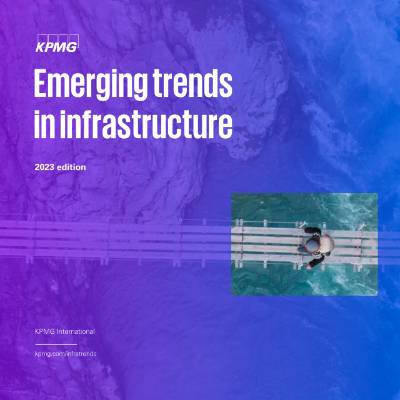Governments have big ambitions on climate change. But they also know that the cost of the required structural changes will likely be enormous - some estimates suggest upwards of 7 percent of global GDP between now and 2050. This, at a time of massive pressure on government pocketbooks, rising inflation and justifiable debates on who holds the costs and reaps the benefits of climate change.
Perhaps not surprisingly, governments are looking to institutional investors to help finance the costs. In many ways, this makes a lot of sense. Institutional investors command some US$100 trillion in assets under management.2 That's more than the world's total annual GDP combined.3 From a pure capital perspective, it's clear the money is there.
Institutional investors are also long-term investors. This isn't just about patient capital. It's about investors who understand the long-term effects of climate change and are invested enough to want to do something about it. And over the past few years, many have become much more active in their management of their assets, working with their investments to deliver real and measurable decarbonization goals.
We are certainly seeing institutional investors wield the power of their capital to drive climate outcomes. Some asset managers have already stated they will raise the cost of capital for those not currently actively decarbonizing.4 Others suggest they will pull back long-term financing altogether. Some large insurers and reinsurers, for example, are saying they will no longer invest in or insure most oil and gas projects as of next year.5 That will be a rude awakening for anyone seeking long-term capital for less-than-clean projects.
Whether or not the new economic realities will dampen their ambition is an open question. Urgent issues around energy security and the rising costs of energy in many markets may force some owners to keep their assets running longer or to continue investing into assets they had once disavowed. Current market volatility is also forcing some asset managers (particularly those more mature pension funds with rising obligations and shrinking contributions) to rebalance their portfolio of liquid and illiquid assets to achieve their objectives.
Over the coming year, we can expect institutional investors, governments and owners to become much more comfortable allowing the power of capital to drive climate outcomes. In part, this may stem from a maturation of global standards (led by organizations like the Climate Change Task Force and the International Sustainability Standards Board). But it may also be driven by a sense of desperation as citizens, governments and policymakers grasp for any help they can get on the climate agenda.
Get in touch
Connect with us
- Find office locations kpmg.findOfficeLocations
- kpmg.emailUs
- Social media @ KPMG kpmg.socialMedia
2https://www.statista.com/statistics/323928/global-assets-under-management/
3https://data.worldbank.org/indicator/NY.GDP.MKTP.CD
4https://www.bloomberg.com/news/articles/2021-11-09/cost-of-capital-widens-for-fossil-fuel-producers-green-insight
5https://www.munichre.com/en/company/media-relations/statements/2022/new-oil-and-gas-investment-underwriting-guidelines.html



